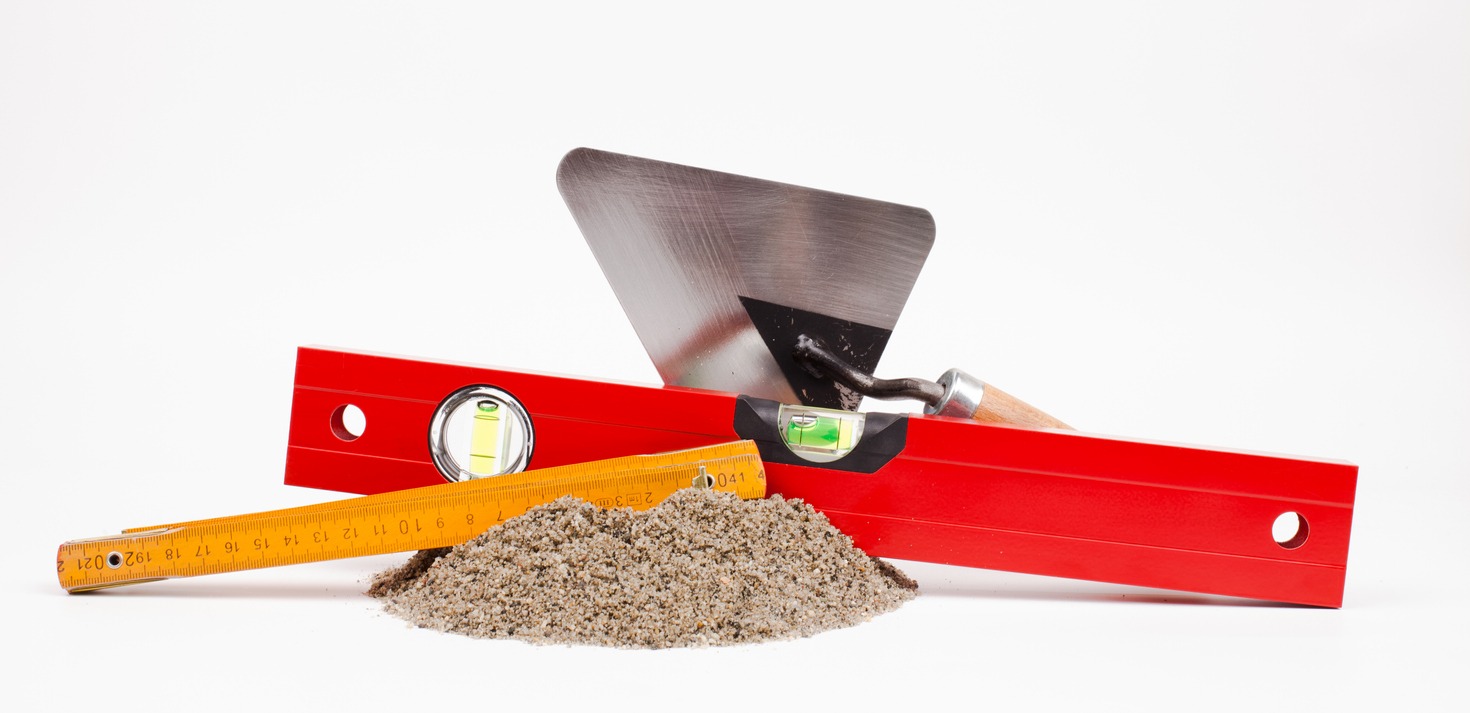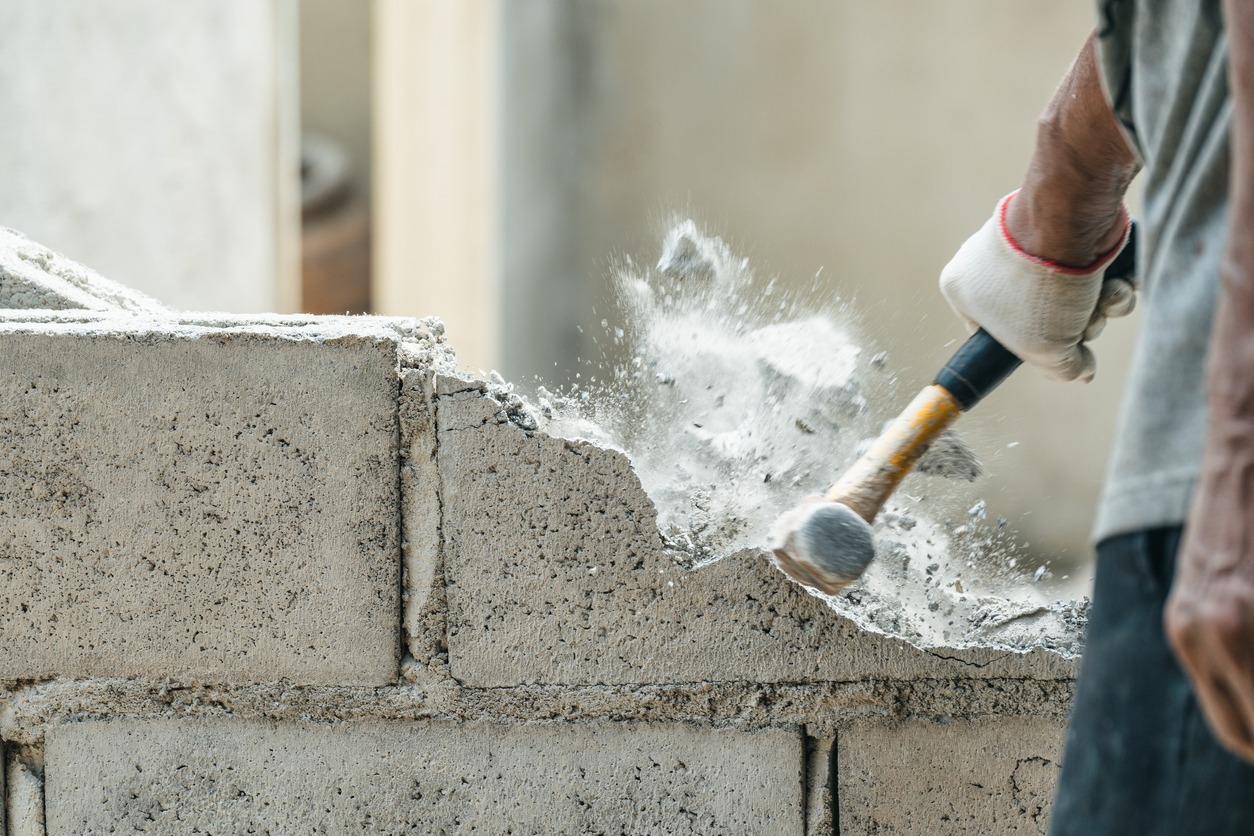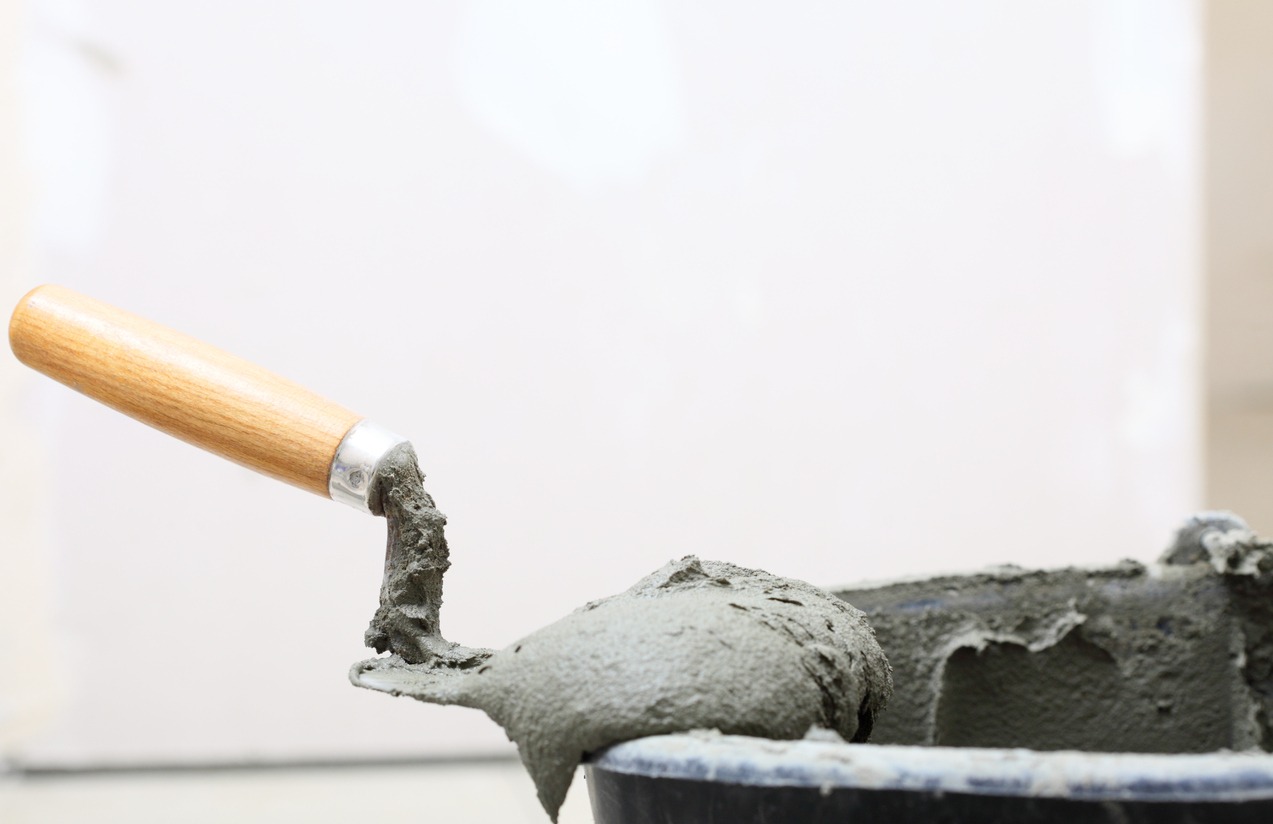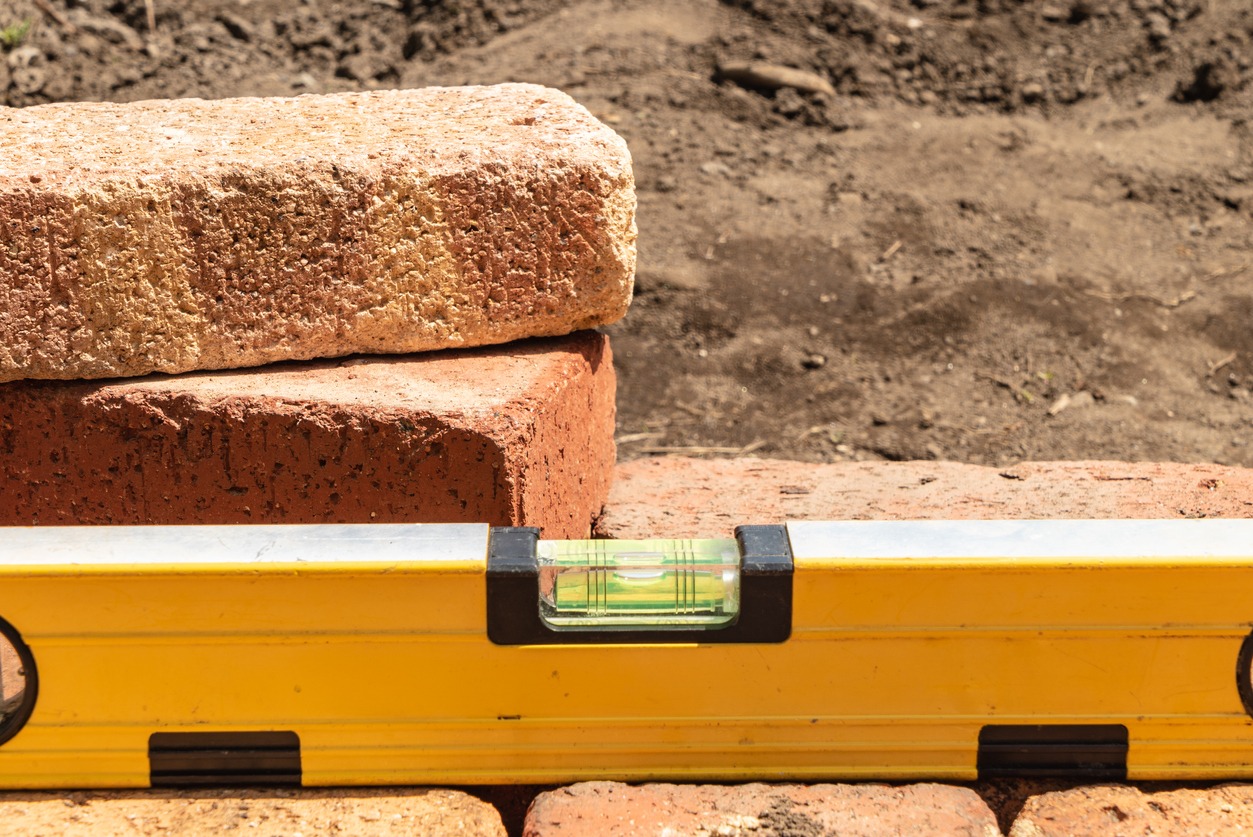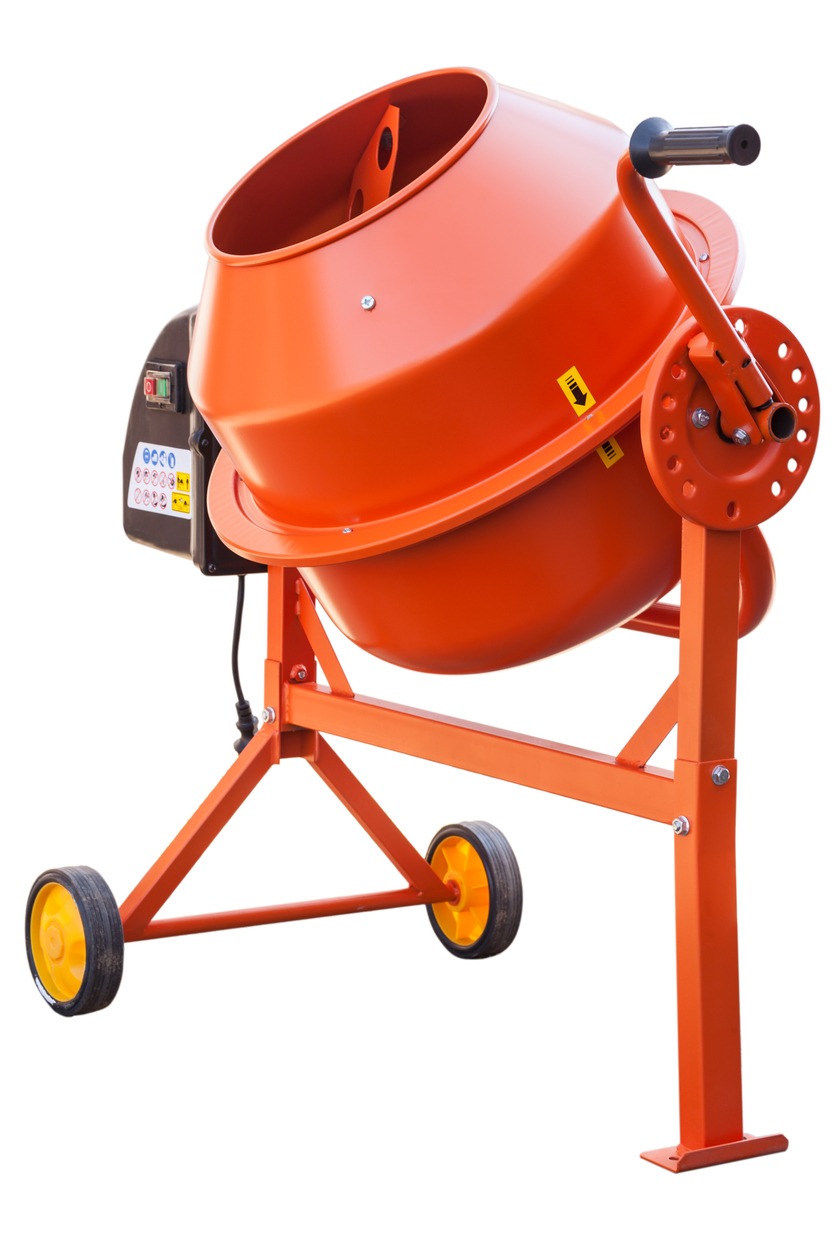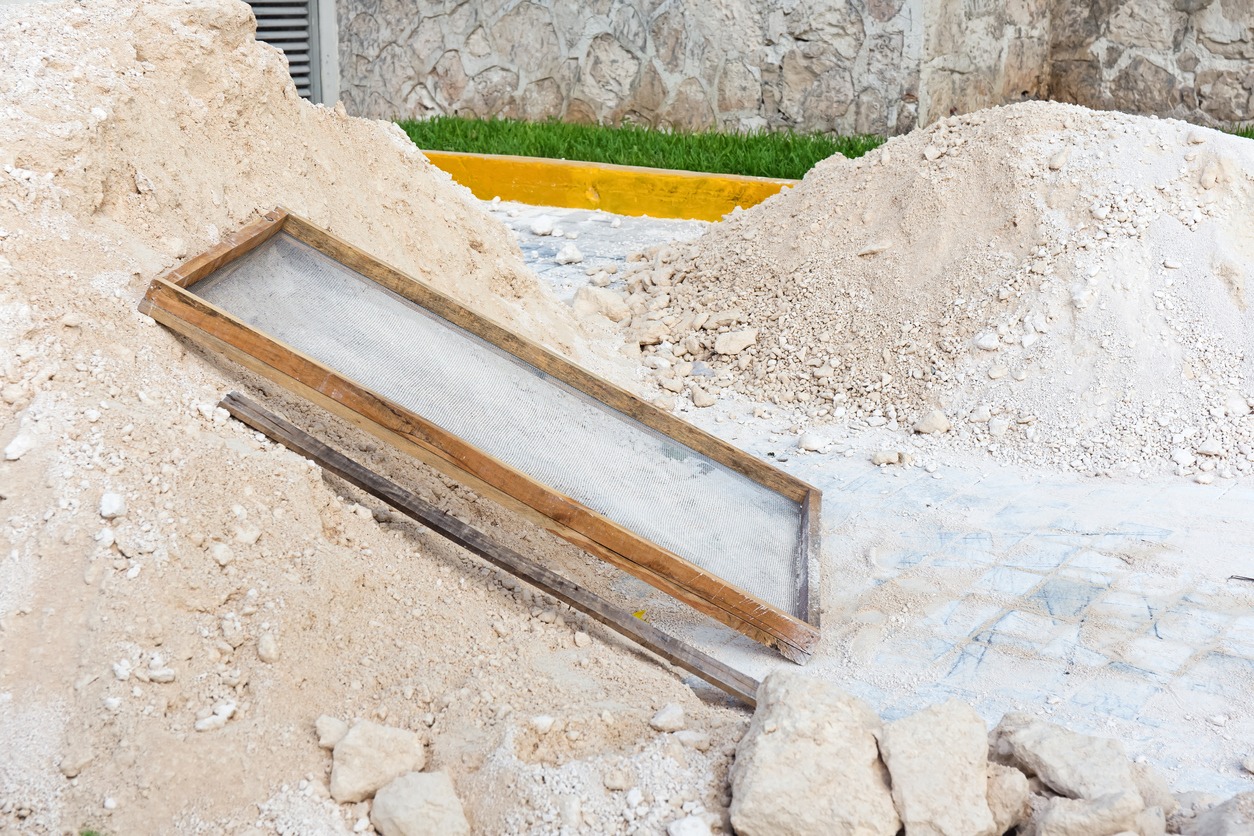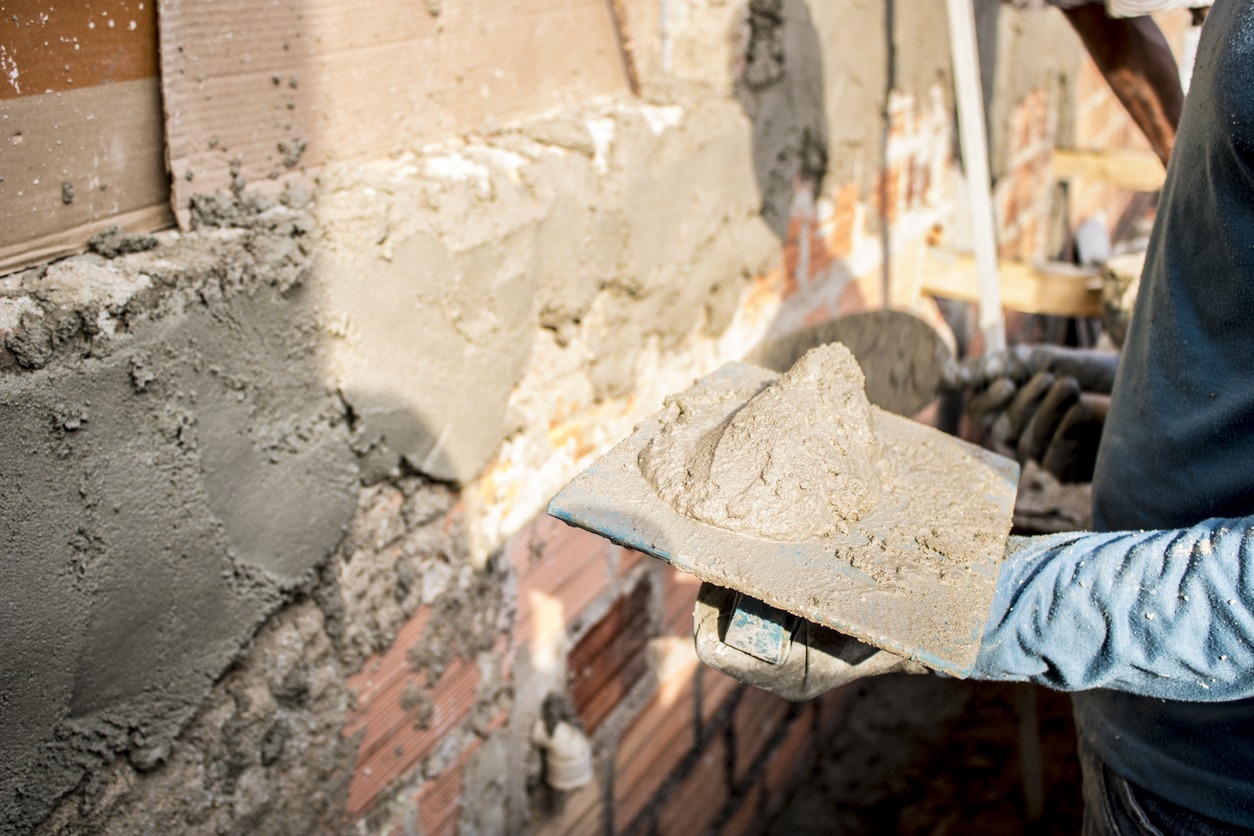Masonry, an age-old building method dating back to the days of ancient Egypt, relies on basic materials like stones and metal shaping tools. This construction method is used for constructing walls, floors, decorations, and more. It involves assembling materials like stones, concrete blocks, bricks, and various types of rocks. Whether you’re planning DIY masonry projects for fireplaces, walls, planters, or any brick or stone-related endeavor, having a basic set of masonry tools is key.
Essential Masonry Tools
Having the right tools is essential for the efficiency, safety, and smooth operation of your masonry job. In masonry and hardscaping projects, these tools are your trusty companions:
Brick Hammer or Mason’s Hammer
A brick hammer, also known as a mason’s hammer, is tailored for the unique demands of masonry work It might resemble a claw hammer with its handle and head, but that’s where the similarities end. This tool’s head is double-sided, like a claw hammer, but one side has a square face, perfect for driving in nails. The other side features a long, sharp chisel-like tip, which is the go-to for splitting bricks or breaking small rocks.
Using a regular carpenter’s hammer for masonry work isn’t advisable. It may damage the carpenter’s hammer, and it’s not suitable for masonry tasks. Masonry work requires a broader hammer face and more weight.
It’s versatile enough to chip off edges or small stone pieces, and the chisel blade is handy for swiftly cutting bricks or cinder blocks.
Trowel
Trowels are indispensable tools in masonry, concrete, drywall construction, and even when applying adhesives for tiling and synthetic flooring. While traditional masonry trowels are typically crafted from forged carbon steel, some newer versions are made from cast stainless steel.
A common trowel is a small, pie-shaped tool with a handle, and it serves various purposes. It’s primarily used to scoop up mortar and evenly spread it onto bricks. If a brick happens to be slightly misaligned, you can also use the butt end of the handle to tap it back into place. Trowels come in a wide range of shapes and sizes, each suited for different jobs. Here are a couple of common types:
Margin Trowel: A margin trowel is a slim, elongated trowel with a handle used for scooping small amounts of mortar onto stones and spreading it evenly. It’s particularly handy when working with narrow masonry units like manufactured stone veneers to prevent excess mortar spillage. Margin trowels are versatile and can be used in various masonry projects. It’s perfect for applying and smoothing materials in those tight, hard-to-reach places where a larger trowel would be impractical.
V- or Square-Notch Trowel: The V- or square-notch trowel is a powerhouse in masonry jobs. It’s a large trowel with two straight sides and two notched sides, which can be square or V-shaped. These notches act as a precise metering system for distributing the right amount of mortar evenly, especially on flat surfaces like cement board. Trying to achieve this with the flat edge of a trowel would be nearly impossible because it’s hard to maintain the correct height above the surface. By pressing the notches against the surface, the mortar flows evenly. To get the job done, hold the trowel at a 30 to 45-degree angle while spreading mortar.
Brick Trowel: These are typically around 18 cm long and feature a steel blade and a wooden handle. Brick trowels excel at gathering mortar and applying it to the next course of bricks. They come in diverse shapes and sizes, but they all share a flat blade on one side and a hardened, curved edge for cutting bricks. The handle is angled to ensure a balanced grip while keeping the mason’s hand away from the mortar.
Small Brick Trowel: This compact version, measuring around 12.5 cm, is perfect for filling the joints between bricks.
Gauging Trowel: The gauging trowel, with a blade length of 15cm to 20cm, serves plasterers much like a margin trowel. Some masons also prefer it for general tasks, such as mixing small quantities of quick-setting plaster.
Angle Trowel: An angle trowel features a flat blade with edges measuring 100mm x 62mm wide, forming right angles of 25mm in height. Plasterers use it to smooth material surfaces when working in corners.
Finishing Trowel: This trowel, sometimes called a floating trowel, sports a wide, flat surface with a handle on one side. It’s handy for transporting sizable amounts of mortar or plaster and for a final pass to achieve that smooth finish on mortar or plaster.
Mason’s Level
Bricklayers have a wide array of tools, but one tool that’s a constant presence is the level. A dependable level ensures that every aspect of the structure is perfectly plumb, level, and structurally sound.
A mason’s level looks similar to a standard level but is usually crafted from lightweight materials like wood or plastic. These are typically over four feet long and are designed specifically to provide accurate measurements for masonry projects.
Just like standard levels, they feature vials set at various angles, each with an air bubble. Two center lines mark each vial, and when the bubble aligns between these lines, the mason knows that the surface is perfectly level.
Masons use levels to establish two types of lines:
- A plumb line: perfectly vertical
- A level line: perfectly horizontal
Cold Chisel
Despite its name, a cold chisel has nothing to do with cold weather. It’s actually meant for cutting cold metal, which makes it ideal for stone cutting. It has a wide, flat head that’s ideal for cutting bricks or veneer stones with the help of a hammer. It’s a versatile tool, suitable for tasks like chipping away excess mortar or removing individual bricks from a wall.
Typically, cold chisels come with plastic handles that absorb the shock from the hammer strikes. They also sport flared guards on top of the handle, safeguarding your hand from any accidental missed blows
Mashing Hammer
A mashing hammer, typically weighing between 2 to 4 pounds, boasts a double-sided pounding head. Its primary purpose is to strike chisels, effectively splitting bricks or stones.
Blocking Chisel
A blocking chisel, made from heavy-duty steel and sometimes measuring up to 8 inches in length, serves a specific purpose – splitting a large number of blocks. When you pair it with a mashing hammer, it’s more efficient than a standard masonry hammer because you have precise control over where you want to make your split. No need to rely on the uncertainty of where a masonry hammer might land. These chisels find frequent use in demolition work and can be attached to tools like hammer drills, jackhammers, or used manually with a heavy hammer weighing three pounds or more.
Masonry Saws
Masonry saws aren’t absolute necessities for concrete, stone, or brick projects, but they can certainly make your work smoother. These versatile tools go by various names like ‘concrete saw’ or ‘consaw,’ ‘road saw,’ ‘cut-off saw,’ or ‘quick-cut saw.’ They come in different sizes, from compact handheld models to sizable walk-behind saws used for slicing through asphalt or concrete. What sets them apart is their diamond saw blades, specially designed to slice through stone, brick, concrete, and more. Most of these saws use water to cool the blades due to the heat generated during cutting.
When it comes to masonry saws, there are two main types commonly used:
Hand Saw: A masonry hand saw looks much like a standard hand saw, but it features longer blades and larger teeth. With a blade typically measuring 6 to 7 inches tall, it may not cut through an entire brick, which is 8 inches tall. However, it’s a handy tool for slicing as far as you can and then breaking off the rest with a masonry hammer. It’s a faster and more efficient way to get the job done.
Power Saw: A circular saw is a versatile power tool that uses a toothed or abrasive disc to cut various materials with a rotary motion. It can handle wood, bricks, plastic, or metal. Instead of cutting through the material, which could damage the surface beneath it, they make precise cuts. These saws can be handheld or mounted on a table, functioning like a table saw. Table saws deliver the cleanest cuts possible. Circular saws are typically electrically powered, although some may run on gasoline engines or hydraulic motors, which can be attached to heavy equipment, eliminating the need for a separate power source.
There are portable versions of a circular saw, which is highly useful for woodworking. However, by equipping it with special tile-cutting blades, it can also handle ceramics and other types of tiles.
Mixer
A concrete mixer is a device that thoroughly combines cement, aggregate (like sand or gravel), and water to create concrete. This is typically done by using a rotating drum to mix all the ingredients together.
For smaller projects, portable concrete mixers are often the go-to choice. This way, you can create the concrete right at the construction site, giving you and your team ample time to use it before it sets.
Jointers
In masonry, mortar joints are the spaces between bricks, concrete blocks, or glass blocks that are filled with mortar or grout. These joints play a significant role in the appearance of the masonry, especially when the surface remains unplastered.
Jointers are specifically designed for shaping mortar joints – those visible spaces between bricks. They often look like long, flat metal bars bent in the middle. These tools can come in round, flat, or pointed shapes, and masons choose the one that suits the type of joint they want to create.
There are various ways to create mortar joints, with common styles including raked, grapevine, extruded, concave, V-shaped, and struck.
Measuring Tape
Tape measures come in various designs, often tailored to specific uses or trades. They may feature different scales, materials, and lengths, all depending on their intended purpose.
In carpentry and construction, measuring tapes are typically equipped with a sturdy, curved metallic ribbon that can extend straight for accurate measurements but coils up for easy storage.
Mason’s Twine
Mason’s twine, also known as mason’s string or mason’s line, is indispensable for creating straight lines and level surfaces when setting posts, patios, footings, and more. It’s a time-saver because it reduces the need to constantly recheck your level. Plus, it has the advantage of not sagging like regular string.
To use it, you secure blocks at each corner of the wall, anchor them to the ground, and then tighten the twine. This provides a straight guideline to follow for your masonry project.
Mason Square
A square is a tool that comes in handy for marking and checking right angles, which are those perfect 90-degree corners. There are also special miter squares designed for working with 45-degree angles. Squares are versatile tools used in woodworking, metalworking, construction, and technical drawing.
In masonry, the masonry square serves the purpose of a standard square, but it’s typically made from wood or plastic. It’s used at the intersection of two perpendicular walls to ensure that the bricks are set at a precise 90-degree angle.
Straight Edges
Straight edges are essential for extending level or plumb lines over longer distances. They’re typically about 1 ½ inches thick, 6 to 10 inches wide, and can stretch up to 16 feet in length. It’s crucial that both the top and bottom edges of a straight edge are perfectly parallel to ensure precision. Even the slightest warp can throw off your measurements.
Wire Brush
Not all masonry tools are designed for pounding and splitting. A wire brush is an essential tool for masonry work, used to clear away rock chips or concrete debris that accumulates during your work.
For instance, when you need to open a crack in concrete before repairing it, a stiff wire brush and a shop vacuum are the most effective tools for removing all the debris from the crack.
Cleaning is an essential part of masonry, so it’s handy to have heavy-duty rubber gloves, scrub brushes, buckets, and sponges at your disposal.
Sieving Screen
Before using sand in masonry work, it should be sieved to ensure uniformity. Different sizes of screens are maintained for various tasks, and it’s important to avoid using rusted screens. Damaged screens with big holes should be replaced promptly. Mechanical sieving machines are also available for sand preparation.
Wheelbarrow
In masonry projects, a sturdy, high-quality wheelbarrow is indispensable. It serves multiple purposes, from hauling decorative concrete pavers and bricks to mixing mortar and concrete, as well as removing construction waste, and more.
Mortar Board
A mortar board is an essential tool in masonry work, providing masons with a convenient and functional surface to work with mortar. It serves as a flat and portable platform where mortar is placed, making it easily accessible during construction or repair projects involving bricks, stones, or concrete blocks.
It is typically designed to be lightweight and easy to move around the job site. Masons use mortar boards not only for the convenient placement of mortar but also for mixing mortar components. They can add dry mortar mix, water, and any necessary additives to the board, then use a masonry trowel or other tools to blend the ingredients to the desired consistency.
Masonry Ladder
A masonry ladder, also known as a scaffolding ladder, is essential for reaching higher areas when building walls.
The specific tools you need may vary depending on the type and scale of masonry work you’re undertaking. It’s important to invest in high-quality tools and keep them in good condition to ensure the quality and safety of your work. Additionally, always follow proper safety procedures when working with masonry tools and materials.
